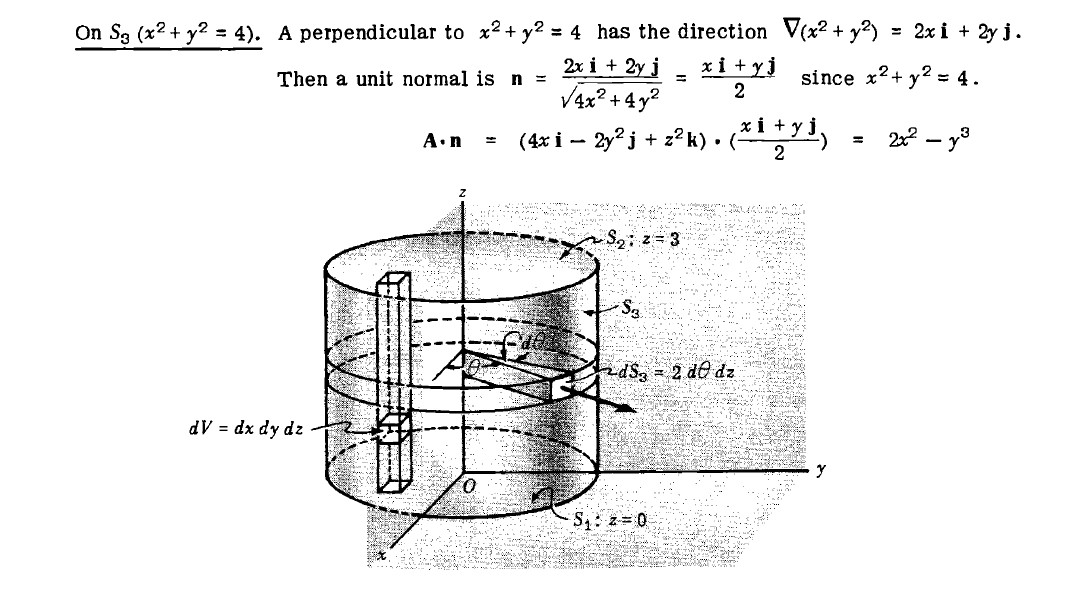It is denoted by ϕ. This is equal to q enclosed divided by e 0, or σa divided by e 0. The axis of the cylinder is aligned with the line charge. Φe φ e for the cylinder. 1 flux through a surface of area a.
Now that we have defined the area vector of a surface, we can define the electric flux of a uniform electric field through a flat area as the scalar product of the electric field and the area vector: By the end of this section, you will be able to: Suppose in a uniform electric field a cylinder is placed such that its axis is parallel to the field. Electric flux through a cylinder. Mathematically, it is defined as the electric field times the component of the area perpendicular to the field.
Web considering a gaussian surface in the form of a cylinder at radius r > r, the electric field has the same magnitude at every point of the cylinder and is directed outward. It is denoted by ϕ. Recognize whether or not a given system possesses one of these symmetries. Web we can now determine the electric flux through an arbitrary closed surface due to an arbitrary charge distribution. 2.4 multiple surfaces and uniform electric field.
Electric flux through a cylinder. Suppose in a uniform electric field a cylinder is placed such that its axis is parallel to the field. But also the flux through the top, and the flux through the bottom can be expressed as ea, so. Now that we have defined the area vector of a surface, we can define the electric flux of a uniform electric field through a flat area as the scalar product of the electric field and the area vector: Web a gaussian surface in the shape of a cylinder of radius \(r\) centered within the empty center region would therefore result in a flux of ea, where a is the area of the curved part of this surface, since the electric field is parallel to the area vector everywhere and constant in.
2 flux through an enclosed surface with charge q using e field and surface area. Mathematically, it is defined as the electric field times the component of the area perpendicular to the field. 6.8k views 1 year ago gauss's law. We found that if a closed surface does not have any charge inside where an electric field line can terminate, then any electric field line entering the surface at one point must necessarily exit at some other point of the surface.
Find The Flux Due To The Electric Field Through The Curved Surface Of The Small Cylinder Whose Axis Is Op And Whose.
It is denoted by ϕ. Flux of the electric field. Flux is always defined based on: It depends on the strength of the electric field going through the surface, the area of that surface, and the orientation of the electric field lines relative to the surface.
3 Flux Through An Enclosed Surface With Charge Q Using Q And Epsilon Zero.
Electric flux through a cylinder. Web a long cylindrical volume contains uniformly distributed charge of density ρ. Deriving gauss's law for electric flux via the divergence theorem from vector calculus. We represent the electric flux through a surface with:
Explain What Spherical, Cylindrical, And Planar Symmetry Are.
Web electric flux can be defined as the total amount of electric field lines (amount of electric field) passing through the given area. The line charge has linear charge density λ = 15μc/m λ = 15 μ c/m. Web electric flux is usually calculated for a given surface. In this video we work through an example of finding the electric flux through a closed cylindrical surface due to a very long thin line of charge.
Now That We Have Defined The Area Vector Of A Surface, We Can Define The Electric Flux Of A Uniform Electric Field Through A Flat Area As The Scalar Product Of The Electric Field And The Area Vector:
(b) charges are enclosed, but because the net charge included is zero, the net flux through the closed surface is also zero. 6.8k views 1 year ago gauss's law. This is equal to q enclosed divided by e 0, or σa divided by e 0. Notice that n ∝ e a 1 n ∝ e a 1 may also be written as n ∝ φ n ∝ φ, demonstrating that electric flux is a measure of the number.
The electric flux is then just the electric field times the area of the cylinder. To compute the flux passing through the cylinder we must divide it into three parts top, bottom, and curve then the contribution of these parts to the total flux must be summed. Gauss’ law makes use of the concept of “flux”. Explain what spherical, cylindrical, and planar symmetry are. Flux is always defined based on:










Ads